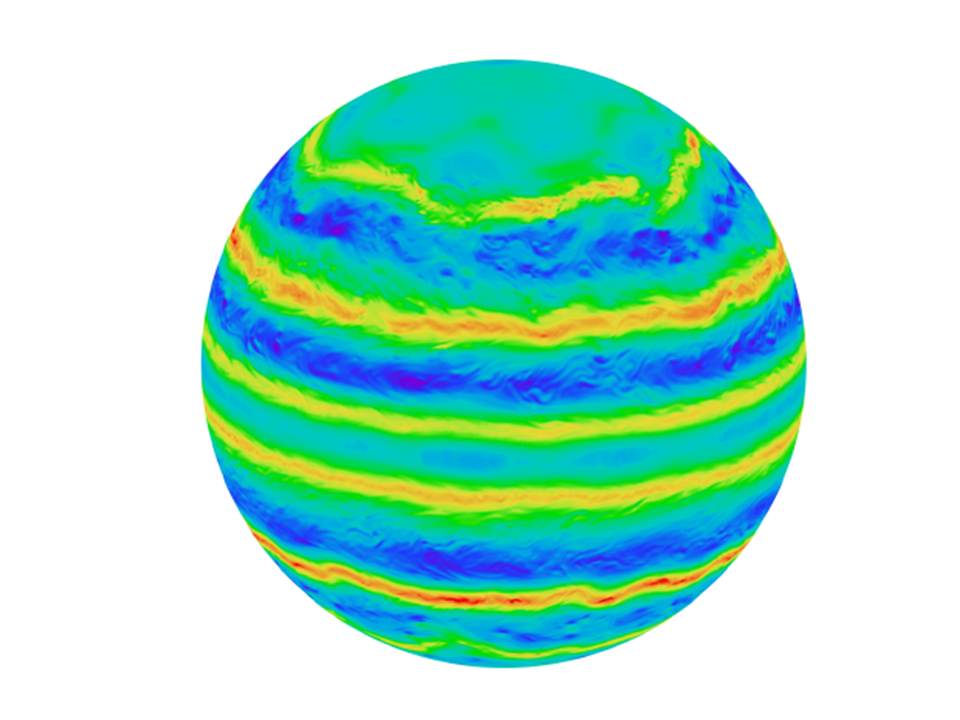Mars
- The Mars Climate Database :
The MCD provides scientists, engineers and enthusiasts with a realistic and reliable modeled martian climatological system.
It has been used to prepare almost every mission to Mars.
- The Mars Planetary Climate Model
-
Climatologies of Martian Atmospheric Dust
- Collected over many Mars Years using observations from multiple instruments.
- Climatologies are available here
- The 1D thermal model:
- A 1D radiative convective model (derived from a full 3D General Circulation Model) which can be used to
compute martian atmospheric temperature, downward radiative flux at the
surface and soil temperatures.
- Download (read included file manual.txt for instructions).
- The 1D illumination tool:
- Software to compute the flux per
spectral band, received by a solar panel or from a given direction
(e.g. by a camera) on the surface of Mars in given orientations and
conditions. It uses a MonteCarlo algorithm to simulate the scattering and absorption of
photons.
- Download (read included file manual.txt for instructions).
The Generic Planetary Climate Model
Our Generic PCM is a Global Climate Model (GCM) designed to model any atmosphere of any planet.
In practice it can be applied to exoplanets (from temperate rocky planets to hot Jupiters), gas and icy giants (Saturn, Jupiter, Uranus, Neptune),
ancient climate (Earth, Mars, Venus, Titan, etc.). The model is developed in close collaboration with our colleagues from LAB, LESIA, LATMOS and the University of Geneva.
- LAPS : an online interactive terrestrial atmosphere simulator, based on a 1D version of the Generic GCM.
- The Generic PCM
- The model is freely distributed and available to the community. Check the User Manual to find out how to download, install and run the model. You may also check the related WikiMedia online documentation
- The model can be used with different dynamical cores (LMDz and DYNAMICO for 3D global simulations ; WRF for 3D cloud-resolving simulations)
- Contact: Francois Forget, Ehouarn Millour
- Eduplanet : A framework designed for teaching purposes, using the Generic GCM. Available here.
Venus
- The Venus Climate Database :
The VCD aims at providing scientists, engineers and enthusiasts with a realistic and reliable modelisation of the Venusian climatological system.
The VCD is a database of meteorological fields derived from General Circulation Model (GCM) numerical simulations of the Venusian atmosphere and validated using available observational data.
The GCM , called "Venus PCM" (see below), is developed at LMD (Paris, France), in collaboration with LATMOS (both laboratories belonging to the Institute Pierre Simon Laplace, IPSL), with support from CNES and from the European Space Agency (ESA).
The VCD is freely distributed and intended to be useful and used in the framework of engineering applications as well as in the context of scientific studies which require accurate knowledge of the state of the Venusian atmosphere.
- The Venus Planetary Climate Model
- The Venus Mesoscale Model
(Lefevre et al. 2017,
2018,
2020) :
The WRF dynamical core, coupled to the Venus GCM's physics package, enables to study meso- and micro-scale processes such as convection or small scale gravity waves. Contact Aymeric Spiga
Titan
The Titan Planetary Climate Model
- Our Titan GCM stems from a long-lasting collaboration between LMD, LATMOS and GSMA.
-
The GCM includes a full representation of photochemistry, enabling an interactive computation of atmospheric species. Variations in compositions are coupled to the radiative transfer and haze and cloud microphysics are currently being improved and updated.
It has been used for reference studies
(Lebonnois et al. 2012;
Charnay and Lebonnois, 2012)
and better interpreting results from the Huygens probe descent.
- Contact Sebastien Lebonnois for installation guidelines.
Pluto
The Pluto (and Triton) Planetary Climate Models
- The full 3D Pluto PCM
(Forget et al. 2017)
accounts for all the processes responsible for meteorology and climate on Pluto (atmospheric circulation, radiative transfer, turbulence, molecular conduction), namely a detailed parametrisation of the condensation of atmospehric nitrogen and methane on the surface.
- A complementary 2D Volatile Transport Model
(Bertrand and Forget 2016,
Bertrand et al. 2018,
2019) derived from the GCM, able to model the evolution and flow of ice deposits over thousands of years is also available.
- Contact Francois Forget
Publications
LMD Planetology Team's publications
in the refereed litterature.
|

|
